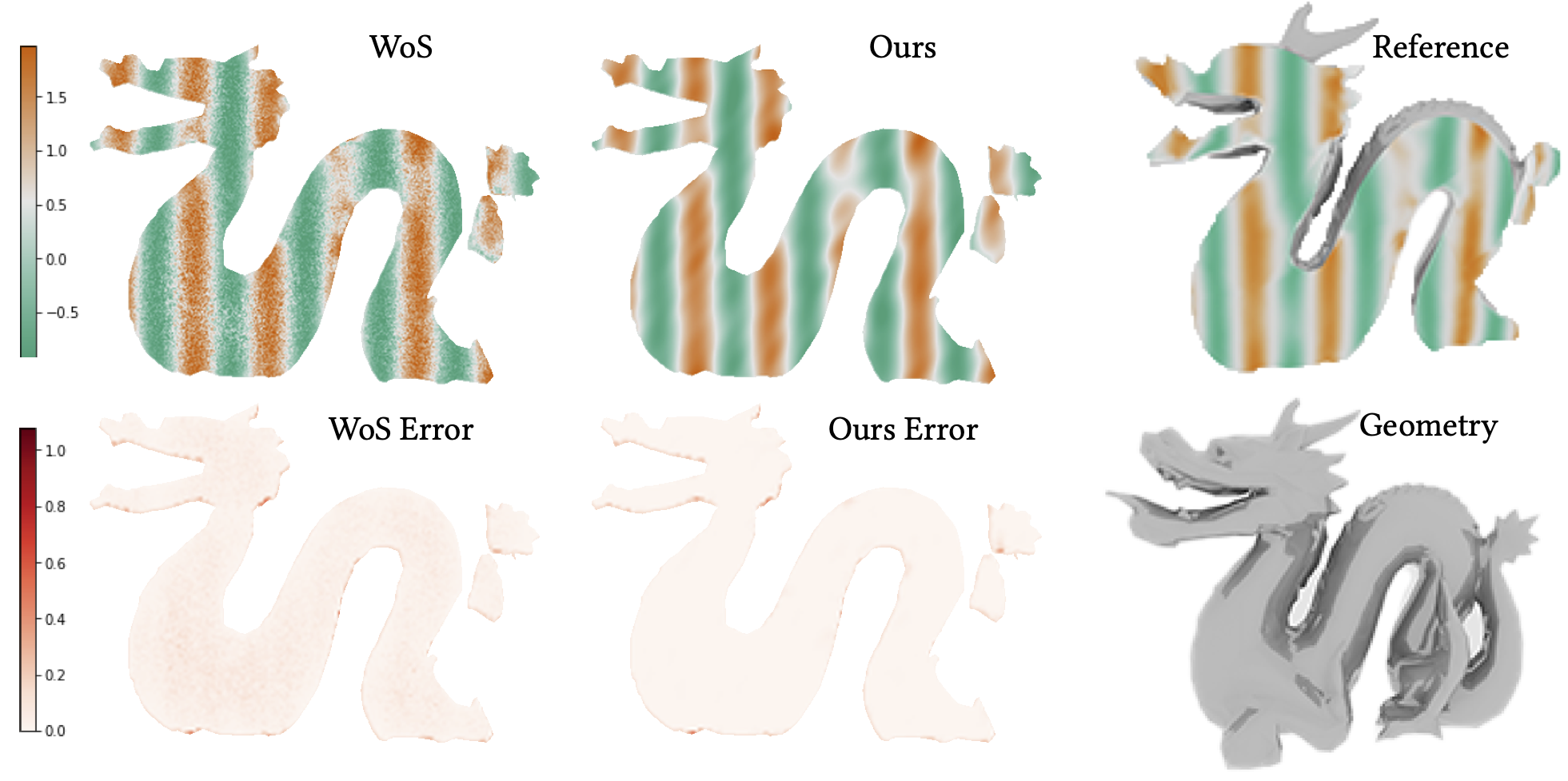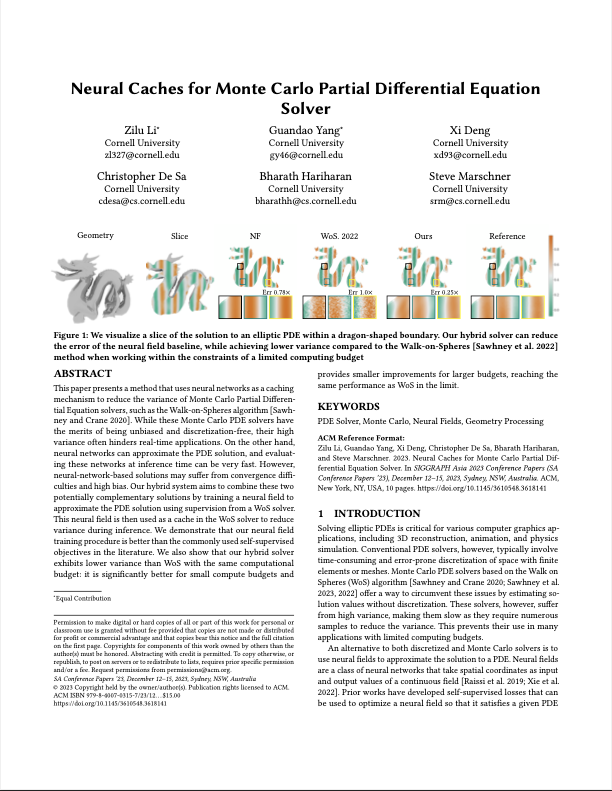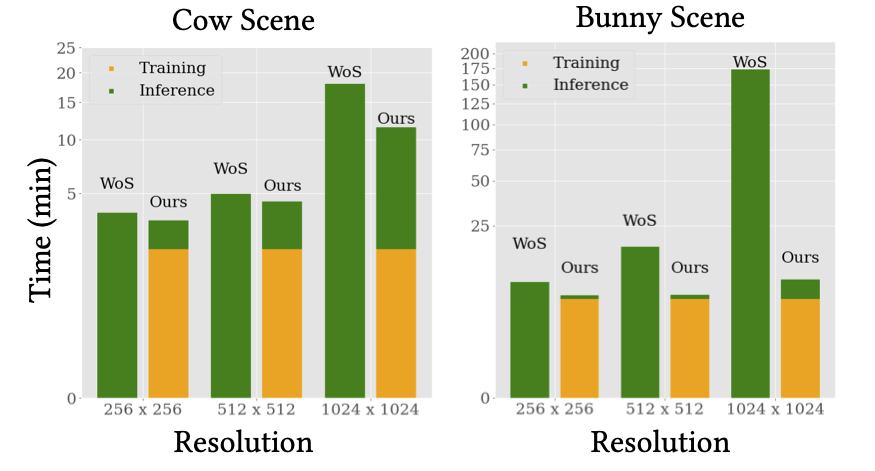
We visualize a slice of the solution to an elliptic PDE within a dragon-shaped boundary. Our hybrid solver can reduce the error of the neural field baseline, while achieving lower variance compared to the Walk-on-Spheres (VCWoS) method when working within the constraints of a limited computing budget


